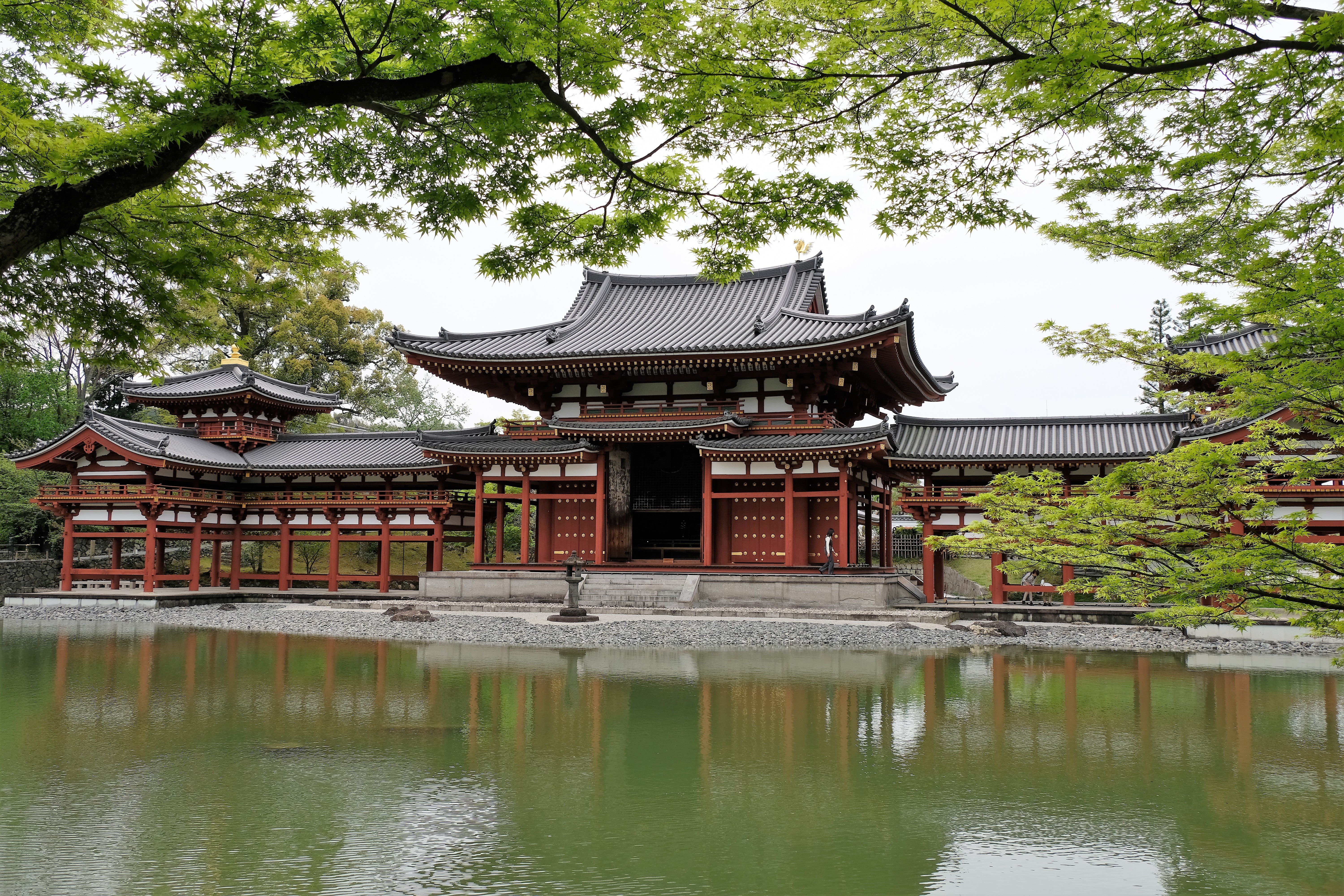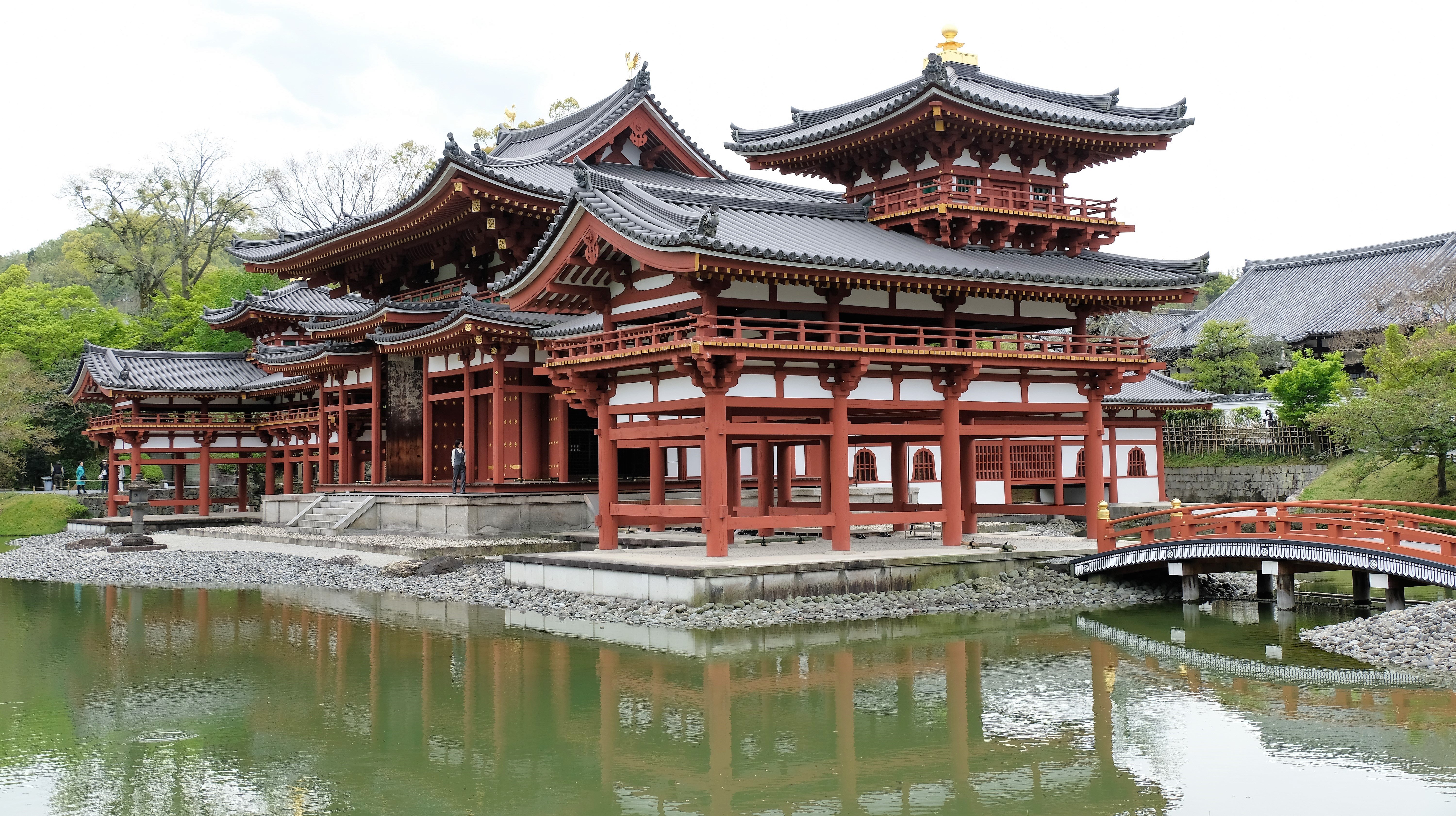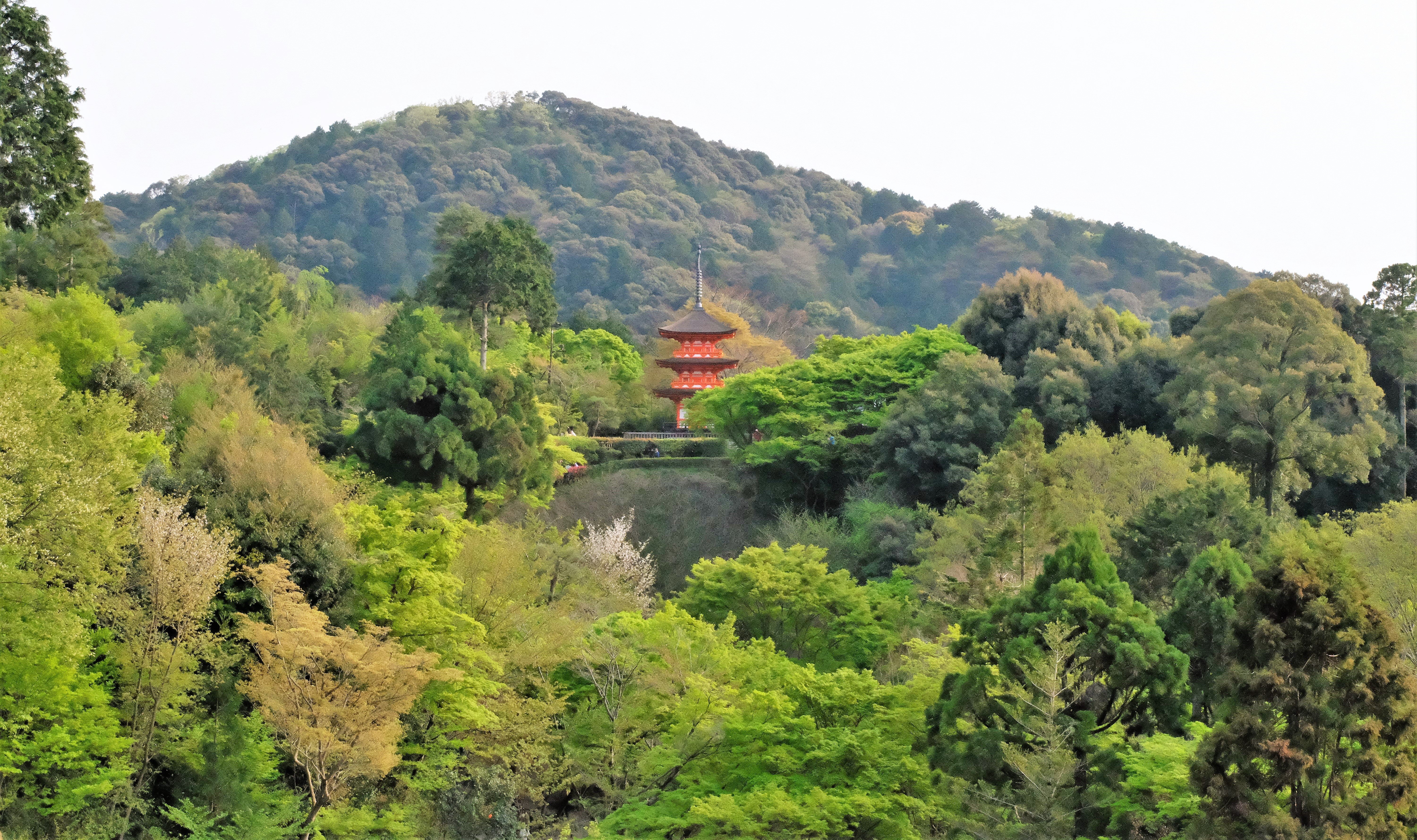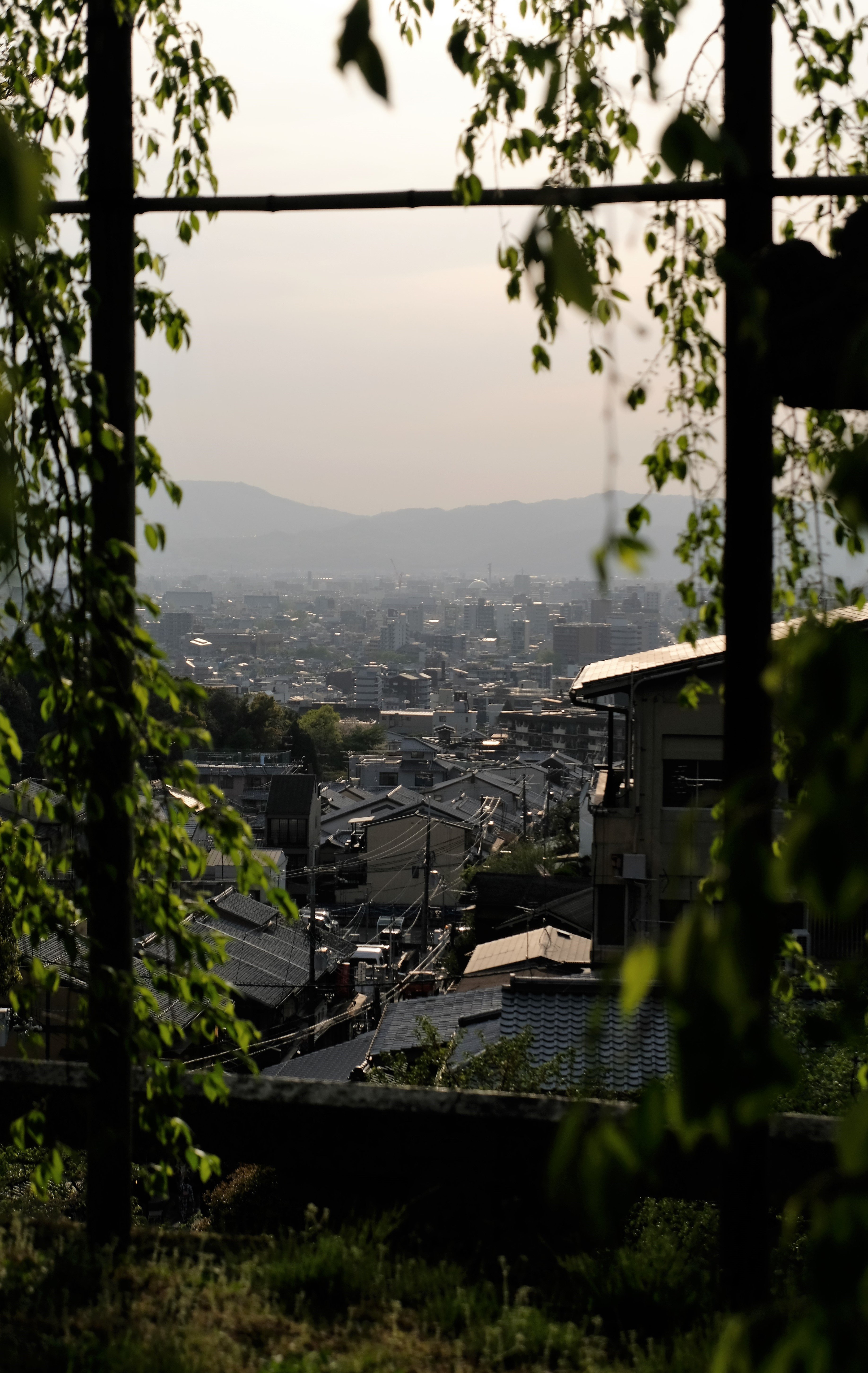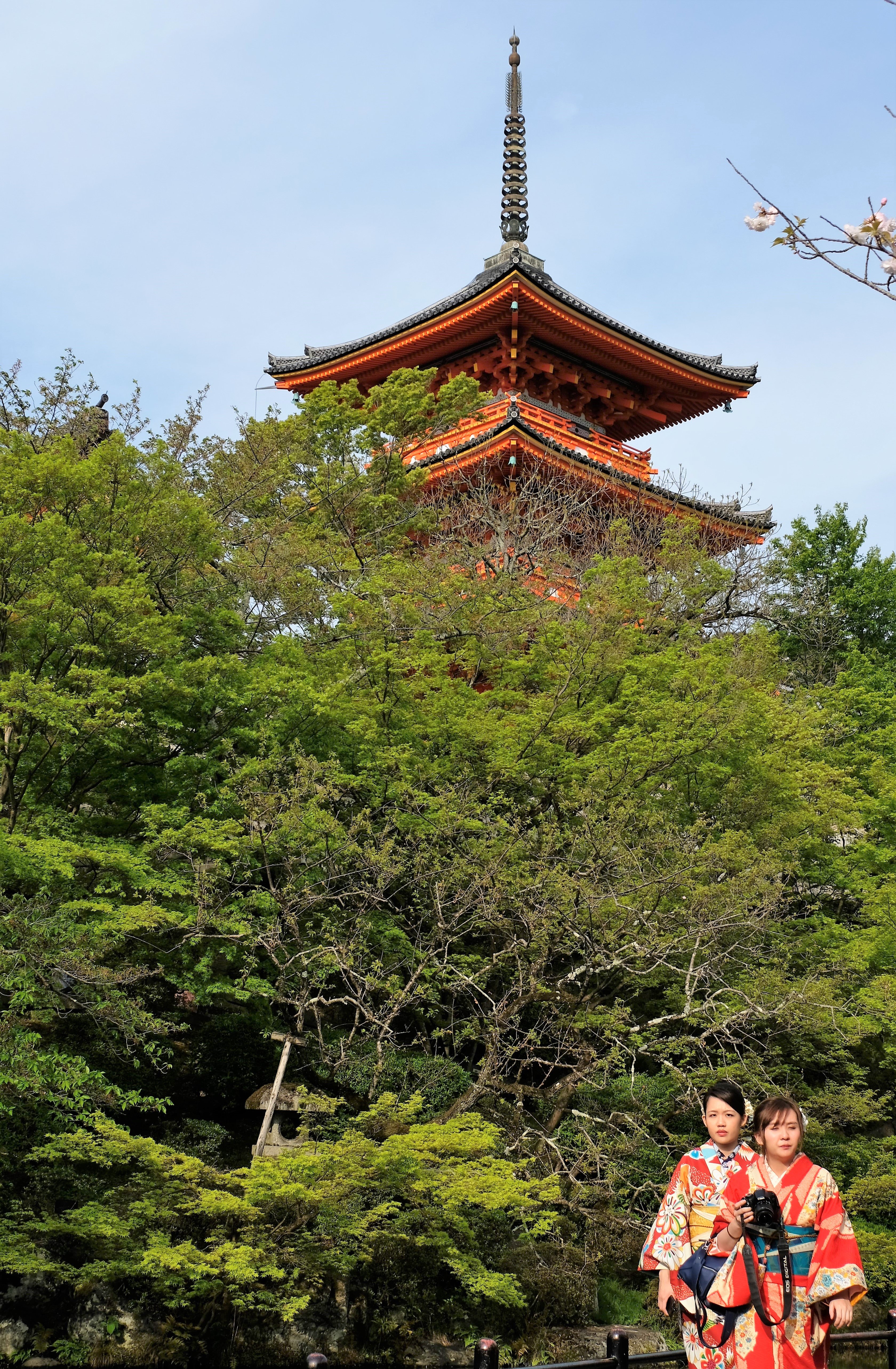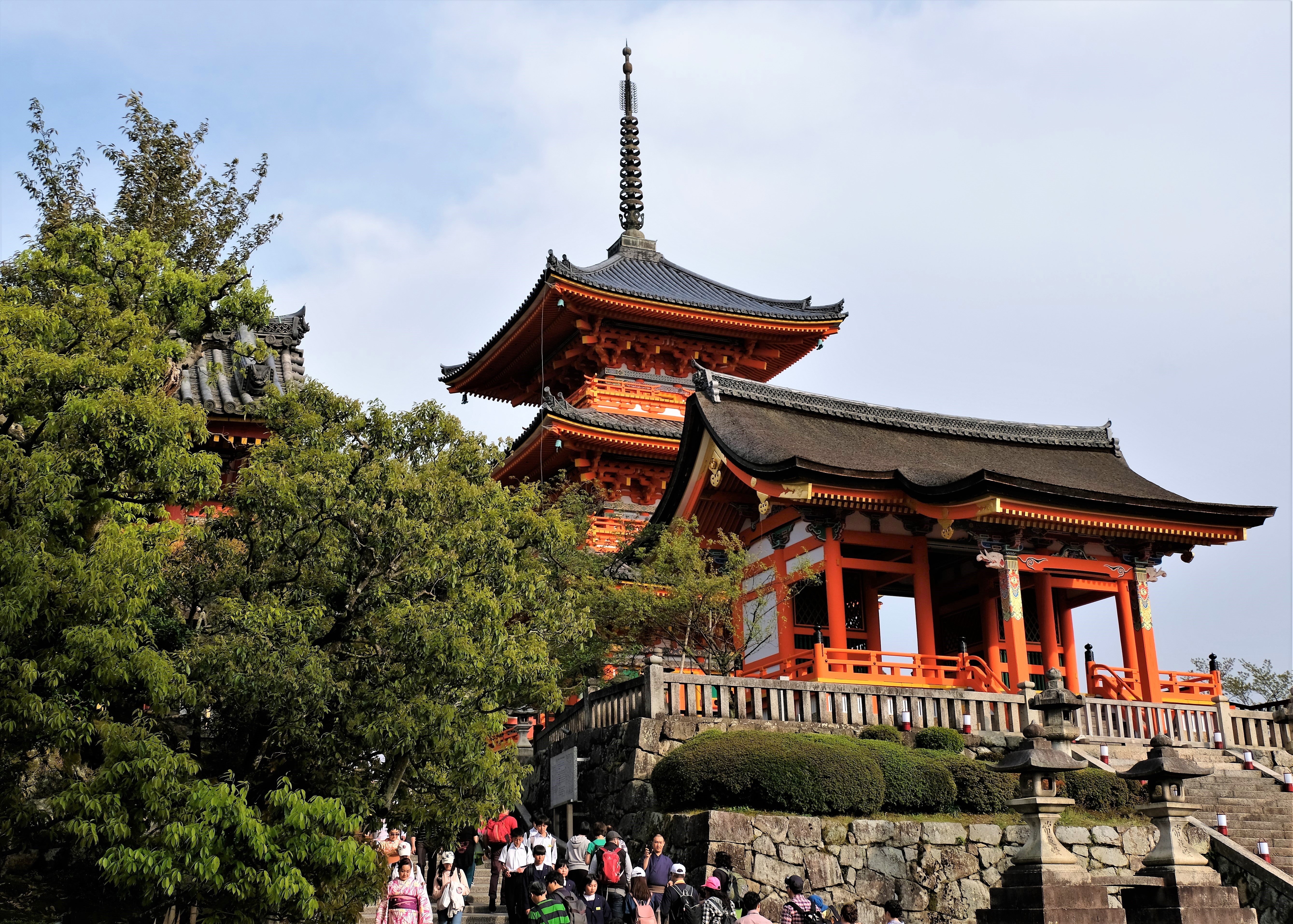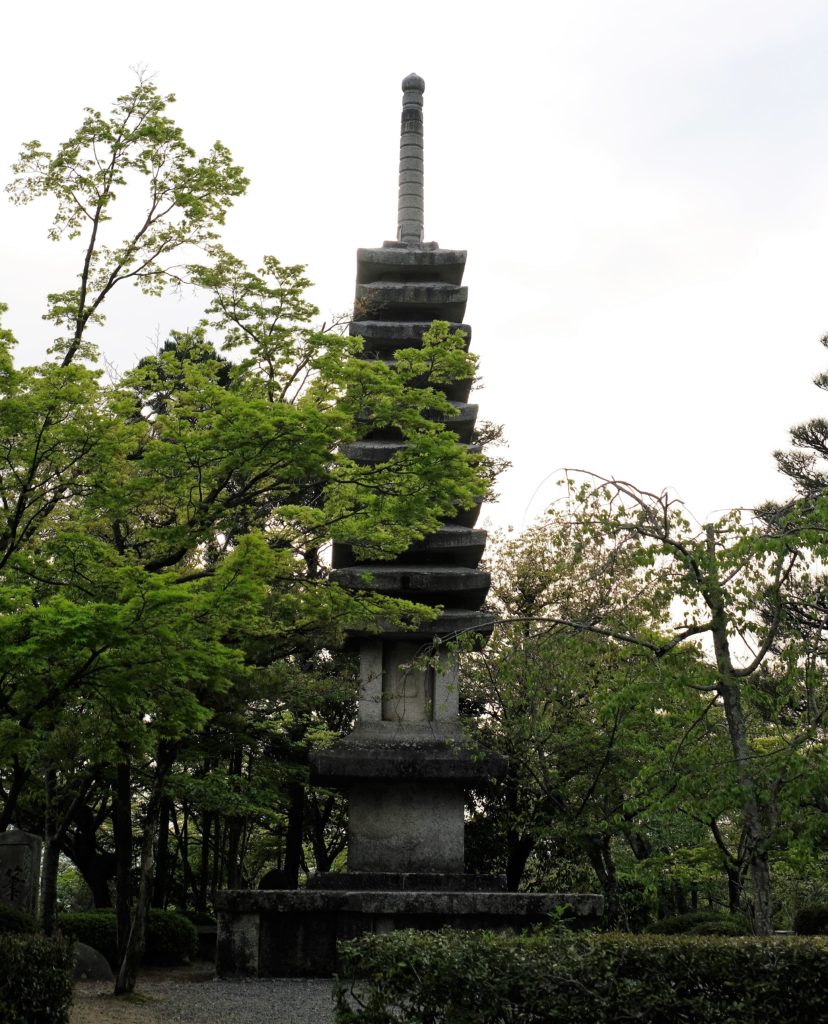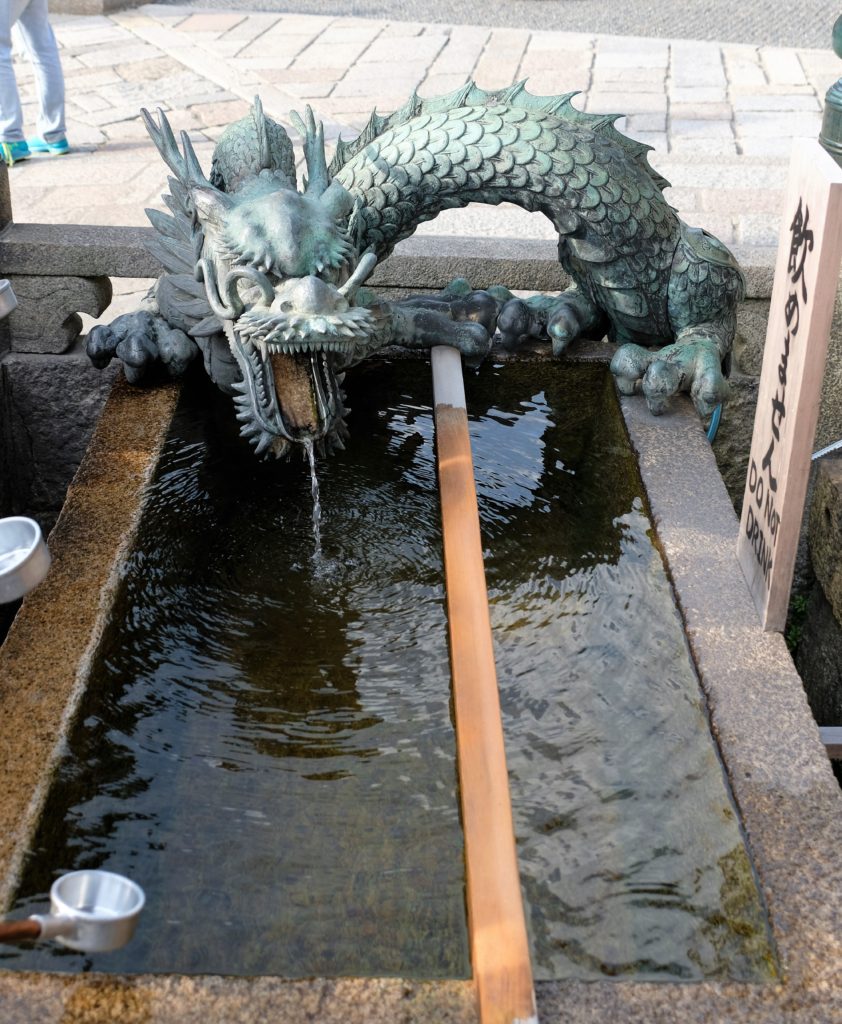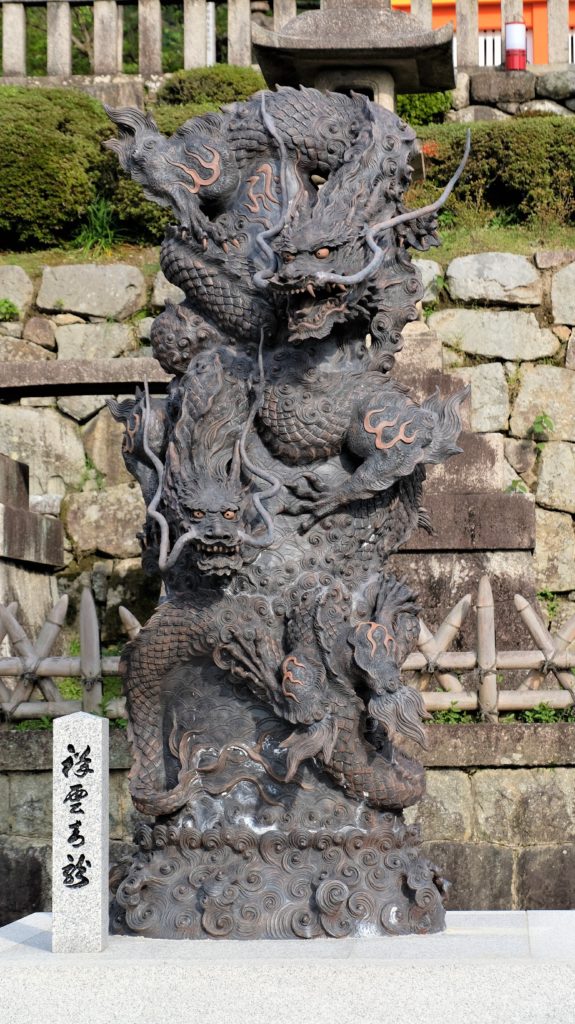Kyoto day 3, Byodo-in, Uji and Kiyomizu-dera were my main sites for the day. Not that much for a full day, but most of the morning was taken up by changing accommodation. I checked out of my hotel and into my new one in the centre of Gion, as early as possible. My first hotel was fully booked so extending was not an option, forcing the decision. If possible, I prefer not to move within the same location/city. Just as in Tokyo and others (Aswan) when I have, it has been for the better – Gion is an excellent location in Kyoto.
Kyoto Inn Gion is less than 100m from Maruyama Park, my room came with all that I had become accustomed to from a Japanese hotel room and my biggest room yet (not big for European standards). It reminded me of a little boutique hotel, which made me feel at home compared to my previous larger establishment. As always, the staff were super friendly and courteous – my booking was for 3 night. Enough about the hotel for now, I’ll refer back to them every now and ten over the coming days.
Uji
Getting to Uji and Byodo-in Temple from Kyoto (from my hotel), took about 45 minutes in total. Using my JR Pass, I took the Keihan Main Line (Red) from Gion-Shijo Station, changing at Tofukuji Station onto the Nara Line (brown) getting off at Uji. Again, even with the language barrier working out the metro was easy. When I wasn’t sure, it was easy finding someone working at the station who could help in English. As I’ve already mentioned many times, the staff at the hotels where always more than willing to help.
Even with my time constraints for the day, I could have planned a little better giving me more time in Uji. There is a lot more to Uji than the Uji River (also called Yodo River and Seta River) and Byodo-in Temple. Had I planned better (wasted less time swapping hotels), I could easily have spent the whole day there. That may have come with an opportunity cost, in retrospect I don’t mind having missed some of Uji’s other sites. More reasons to go back to Japan! ?
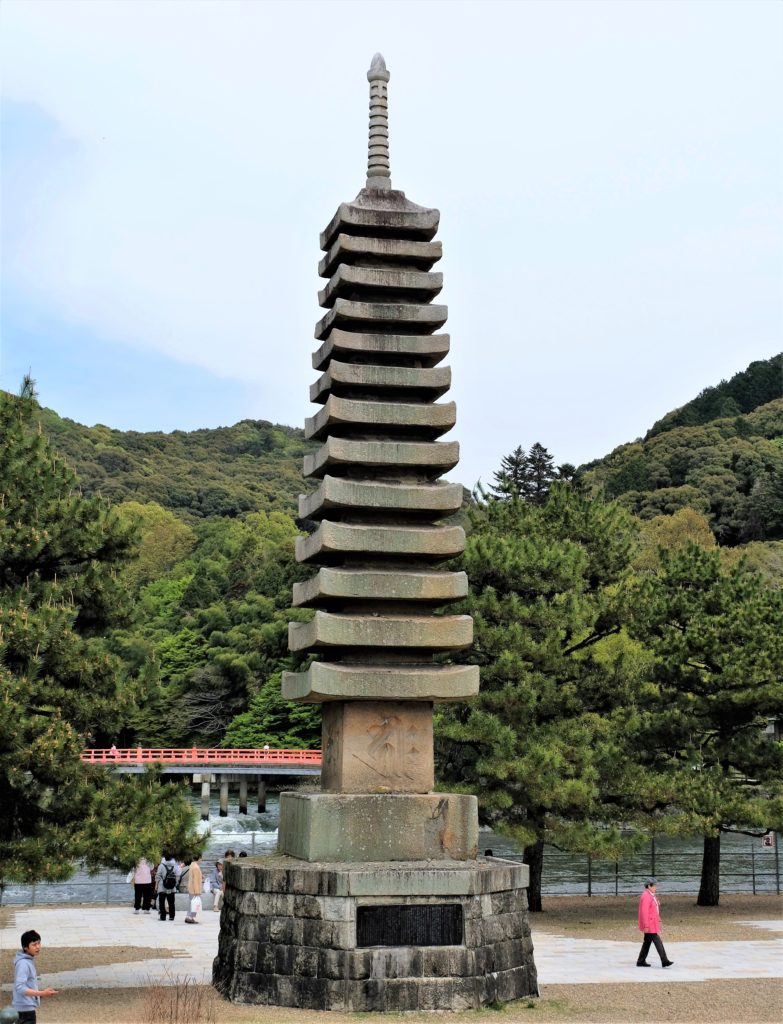
Now, the station is only a few hundred metres from the river. My hasty planning the night before meant I missed a raft of monuments on the bank of the river, including on Tachibanajima Island. My assumption was that everyone was only there to visit Byodo-in Temple, and taking in the site of the river. Nope, I was wrong. Not to get into all that I missed, however next time I’d like to see Hashi-dera Hojo-in Temple, Kosho-ji Temple and Eshin-in Temple. With Mimurotoji Temple Garden on the top of that list. Known for its gardens with flowers all year round.
Byodo-in Temple
Stemming from the Heian Period, it serves as both a temple of the Jōdo-shū (Pure Land – Nishi Hongan-ji) and Tendai-shū sects of Buddahism. To understand Byodo-in Temple’s significance to the Japanese you need look no further than some of its money. The temple is imprinted on the ¥10 cent coin, and a phoenix on the ¥10 000 note. I’ll explain about the association with the phoenix shortly. Not to mention, Byodo-in Temple is a UNESCO World Heritage site and that it’s been on postage stamps many times too.

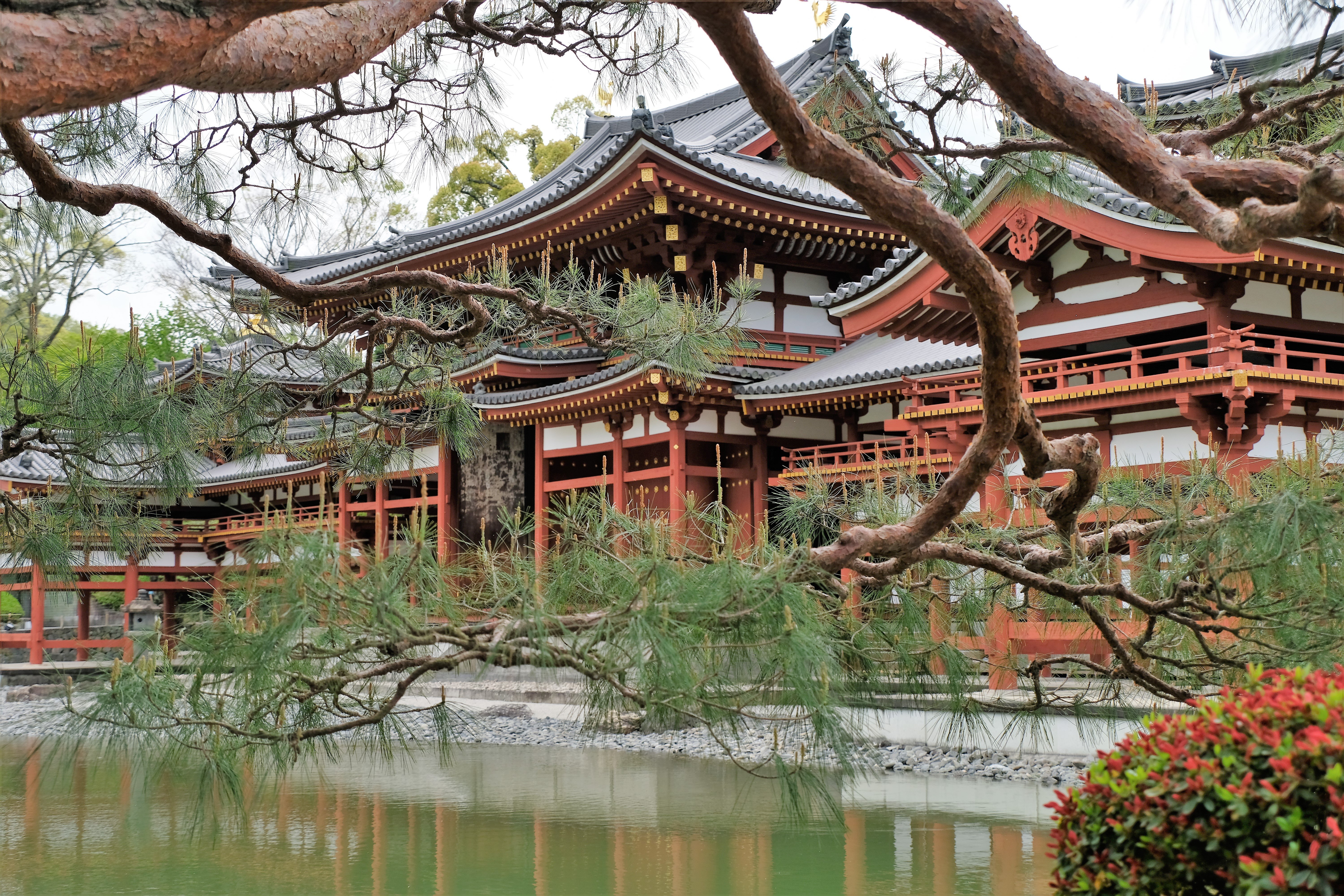
Background
Byodo-in started off as a rural villa for the high-ranking politician Minamoto no Shigenobu. Fujiwara no Michinaga, another high-ranking politician and powerful member of the Fujiwara clan, bought the villa after Minamoto no Shigenobu’s death. Fujiwara no Michinaga’s son, Fujiwara no Yorimichi, converted the villa into a Buddhist temple in 1052. The complex used to consist of other buildings, which burnt down in 1336, the only original building is Phoenix Hall.
Officially named Amida Hall (Amida-dō) after the celestial Buddha Amida (Amitābha/Amitāyus), around the 17th Century it became more commonly known as Phoenix Hall (Hōō-dō). This change of name was organic not deliberate. A combination of the ceiling phoenix painting in the main hall, and the metaphorical shape of the temple resembling a bird/phoenix. Ps. “hōō” is the Chinese phoenix.
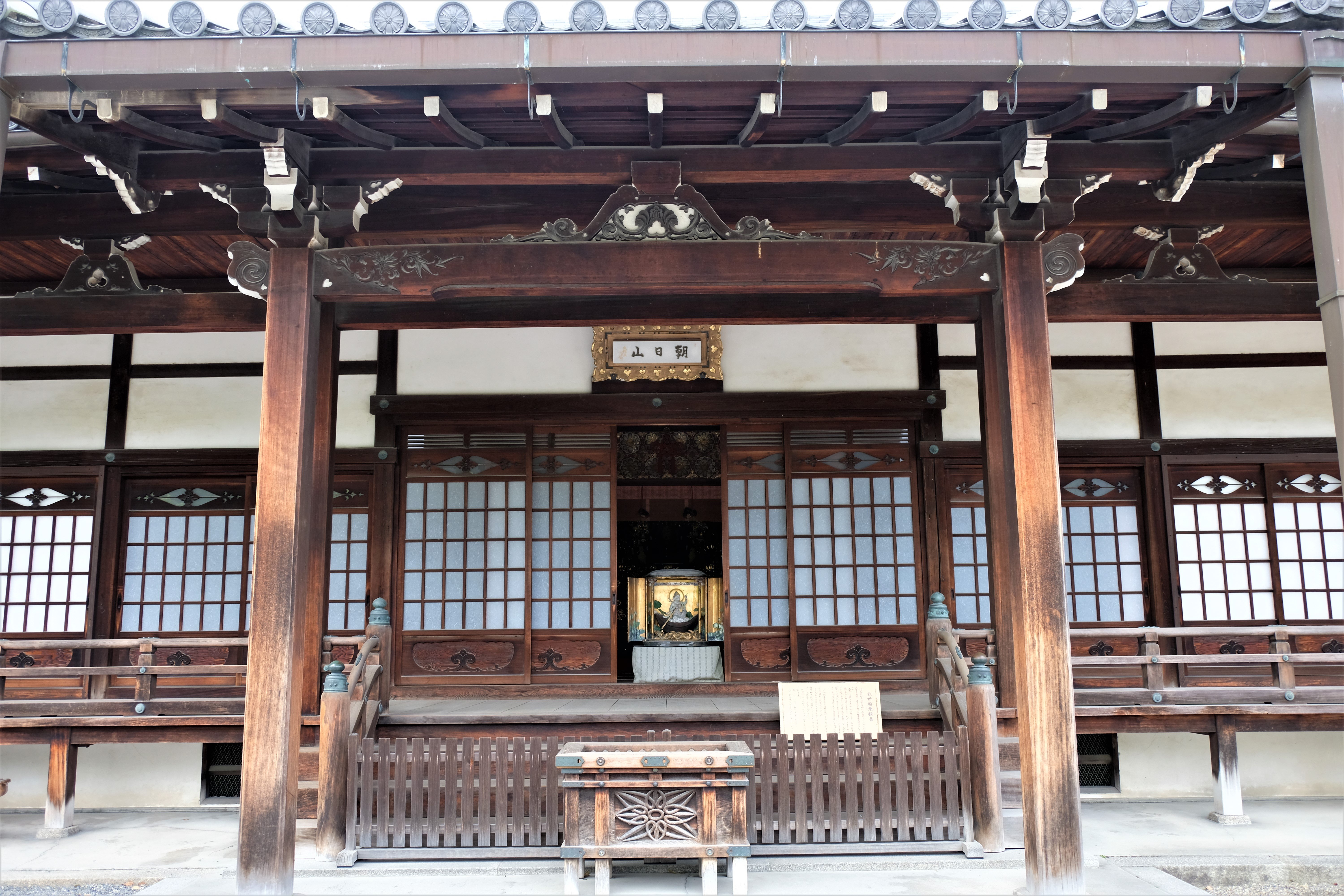
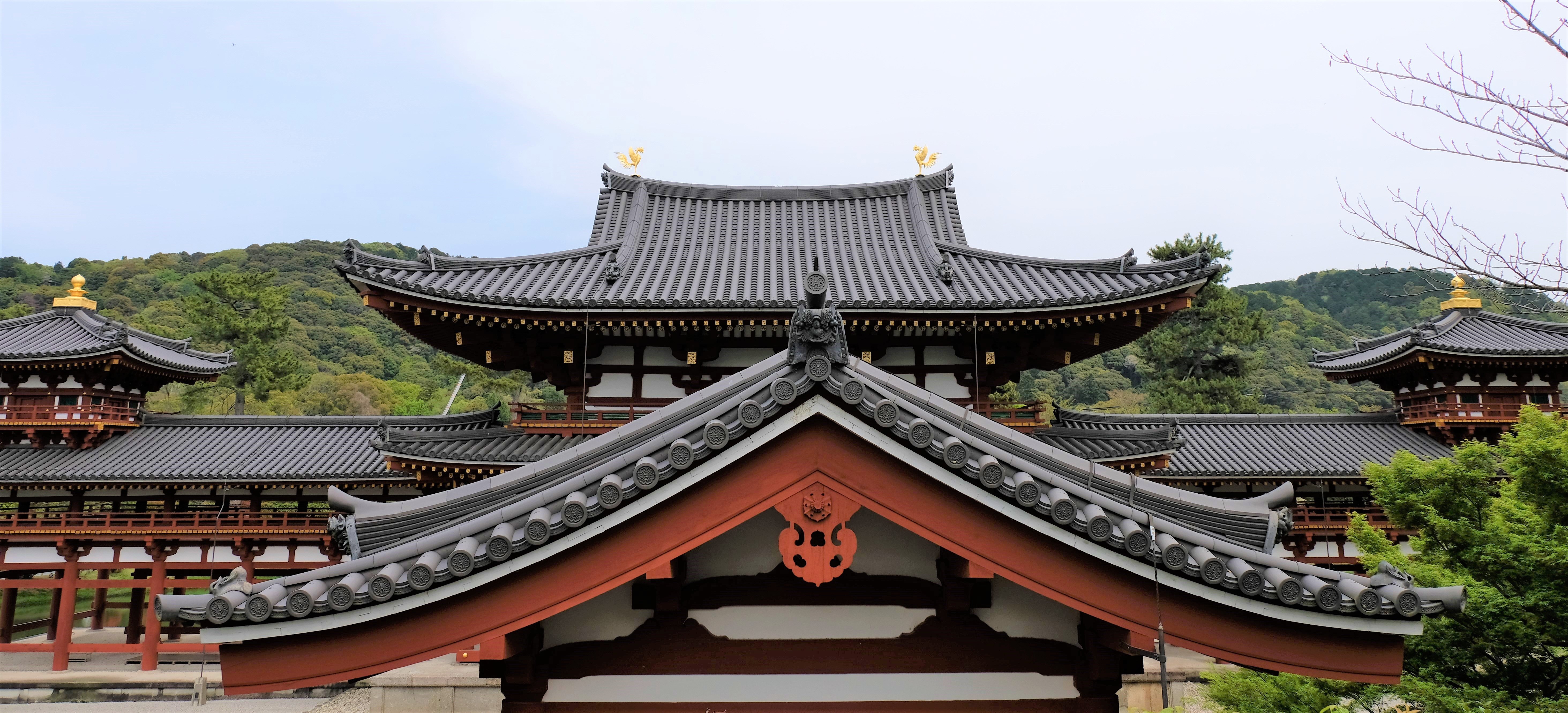
Back to my visit
It’s one of the smaller temple complexes I’ve been to, and in perfect condition owing to restoration work in 2014. Simply put, Byodo-in Temple is a beautifully executed architectural metaphor. Two symmetric corridors span out on either side from the body of the central hall. Like a phoenix stretching out its wings to the fullest. Behind the body its tail fans out long and low. Three colours dominate the temple, a mixture of terracotta-vermilion for fire, white and grey for the plumage. The terracotta-vermilion conjuring up flames surrounding the phoenix against its sparse white feathers. The flames from the underbelly topped by grey tiles with gold crests.
Byodo-in Temple represents the antithesis of harmony through symmetry. Such a contrast, a fiery bird perched on an island in the middle of a pond. A slight breeze glancing off the water breaking the temple’s reflection into a mirage. With the gardens surrounding the temple, Byodo-in represents the four elements through architecture – earth, wind, water and fire.

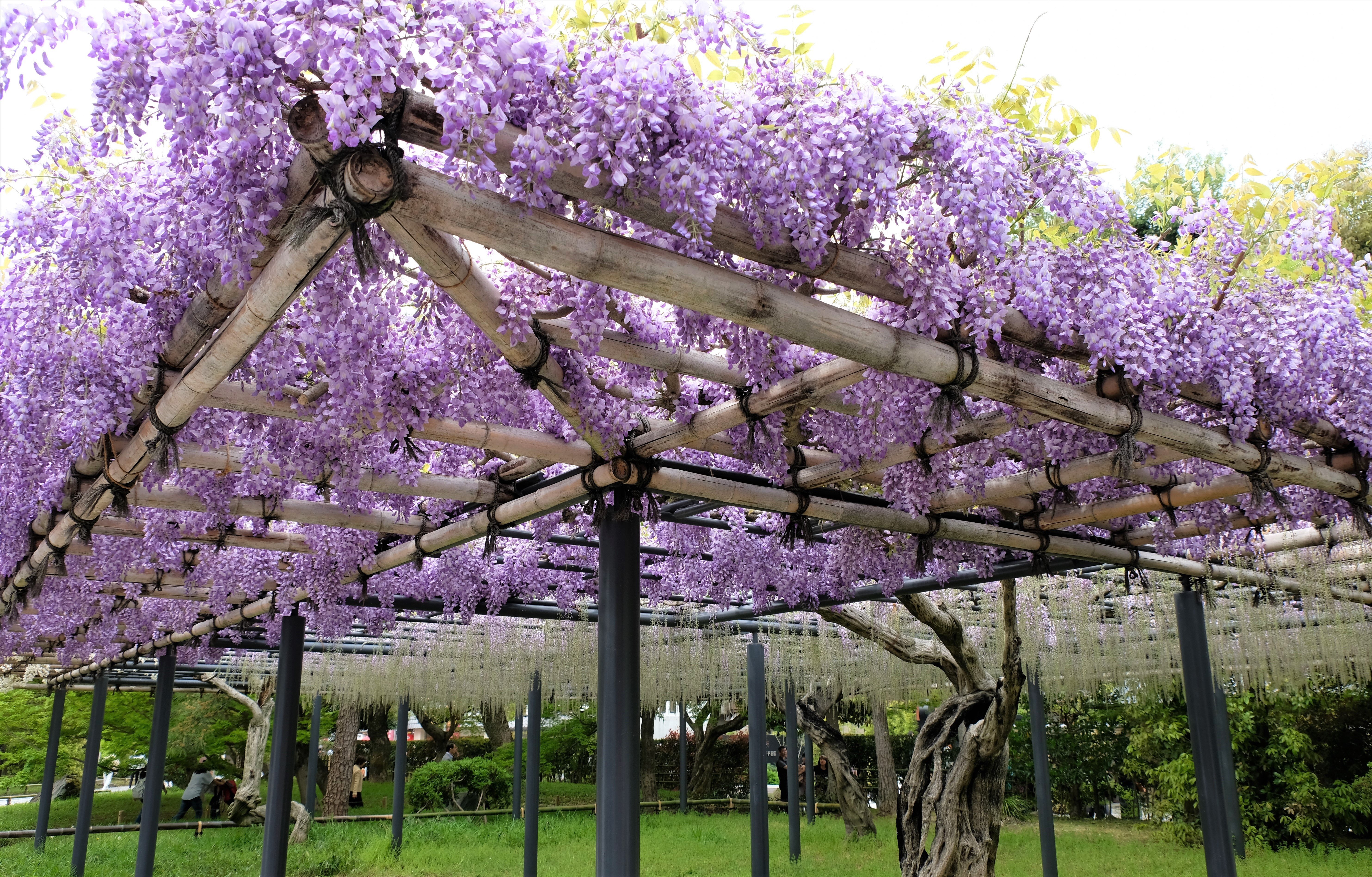
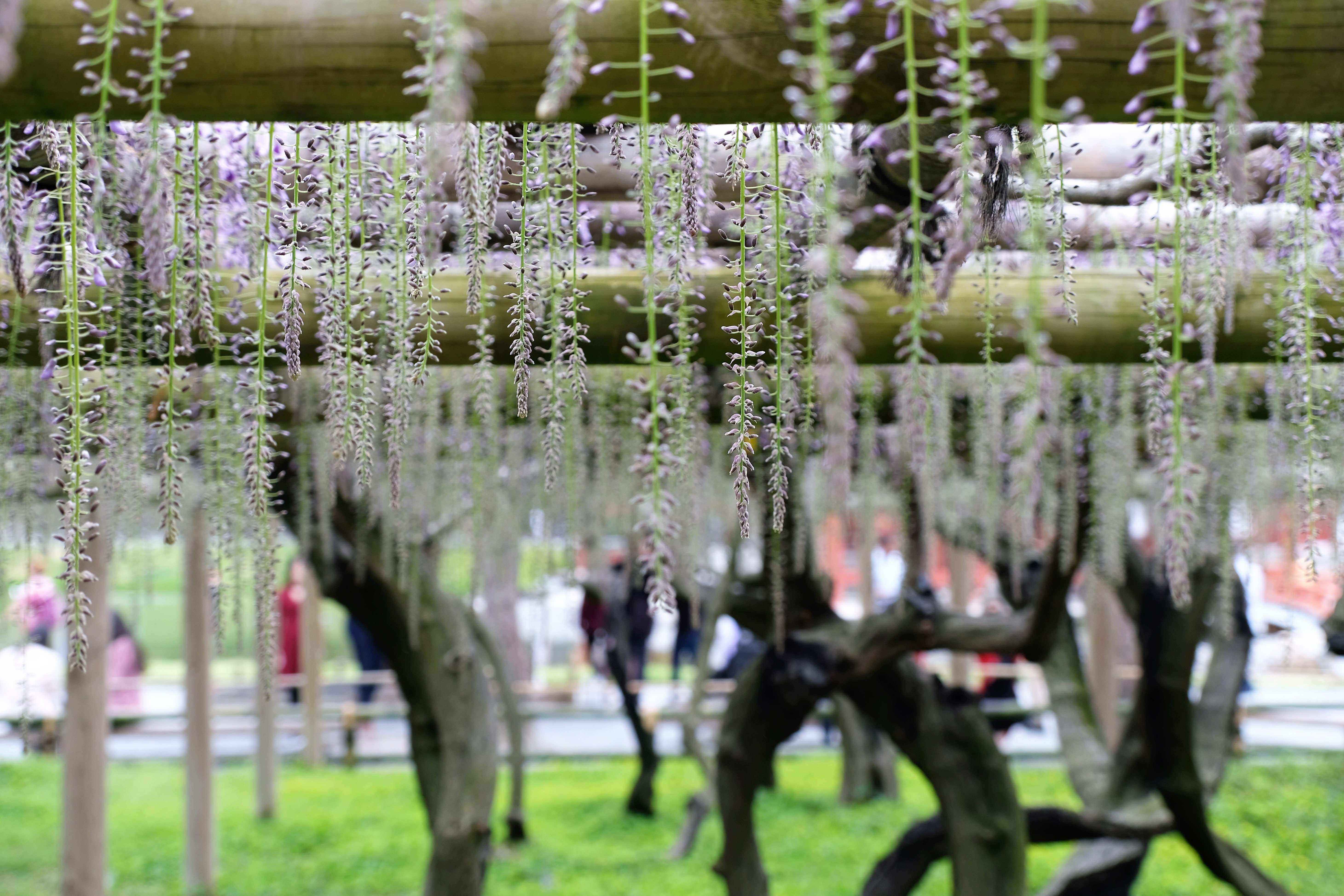
Owing to my self-imposed schedule for the day I didn’t venture into Phoenix Hall. They only allow about 30 people every hour and I had just missed my chance. I thought about waiting (plus paying the additional ¥300), but its just not possible to do and see everything. In retrospect, I wish I had waited another hour. For the rest of my visit I wondered around the gardens. Flourishing greens of all shades and shapes accessorised with scattered reds, dashes of white and canopies of amethyst flowers.
I tried different photo styles with little success. With my limited photography skills it does help when the subject/s are so perfect. If I had to visit again (and I wouldn’t hesitate) I’d prefer going either ever very early or late. The phoenix taking flight into the sky with fiery showers of red and orange melting into the rising or setting sun. As with so many of these temples, visiting when there is nobody around must be a moving experience.
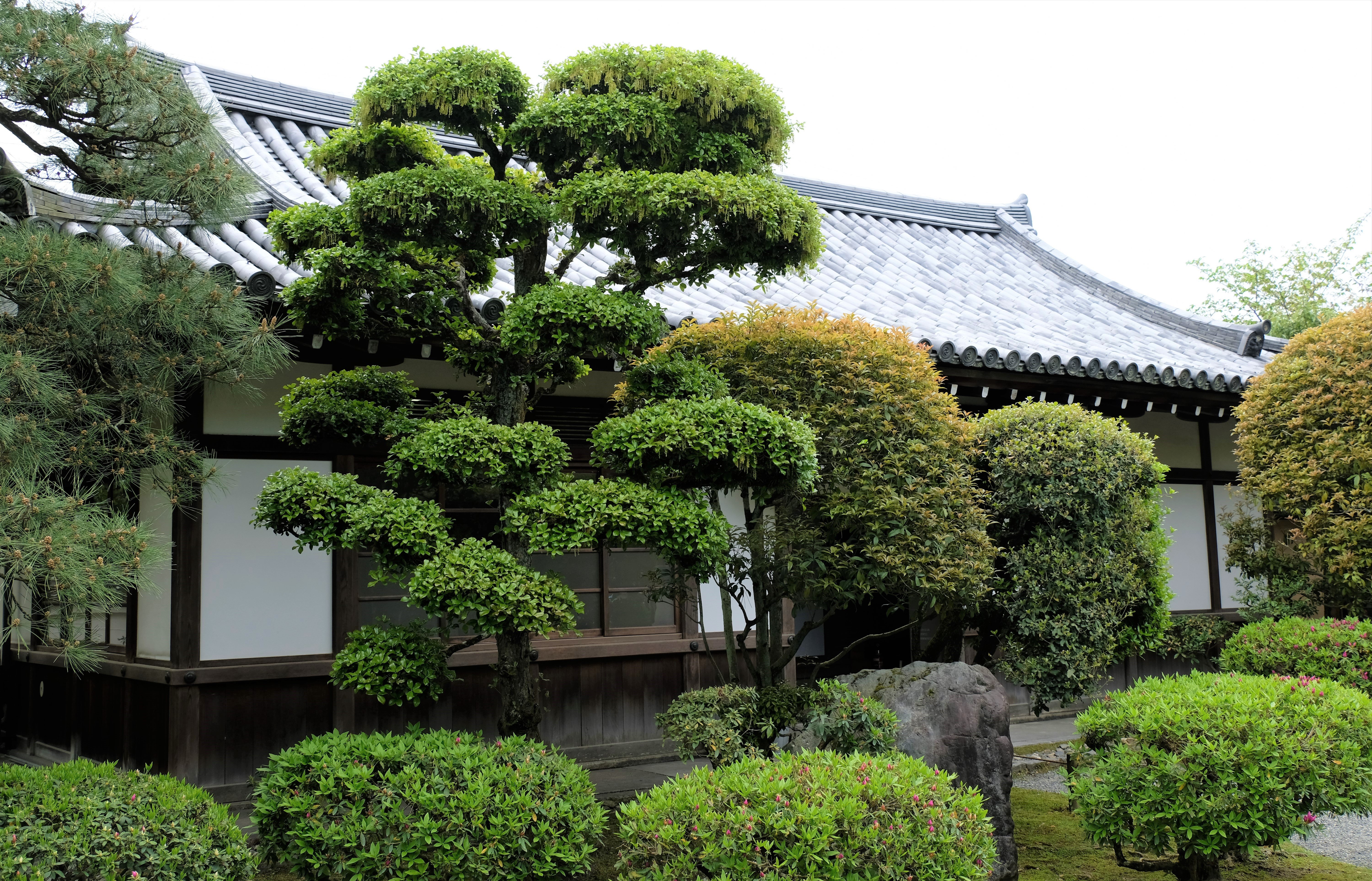
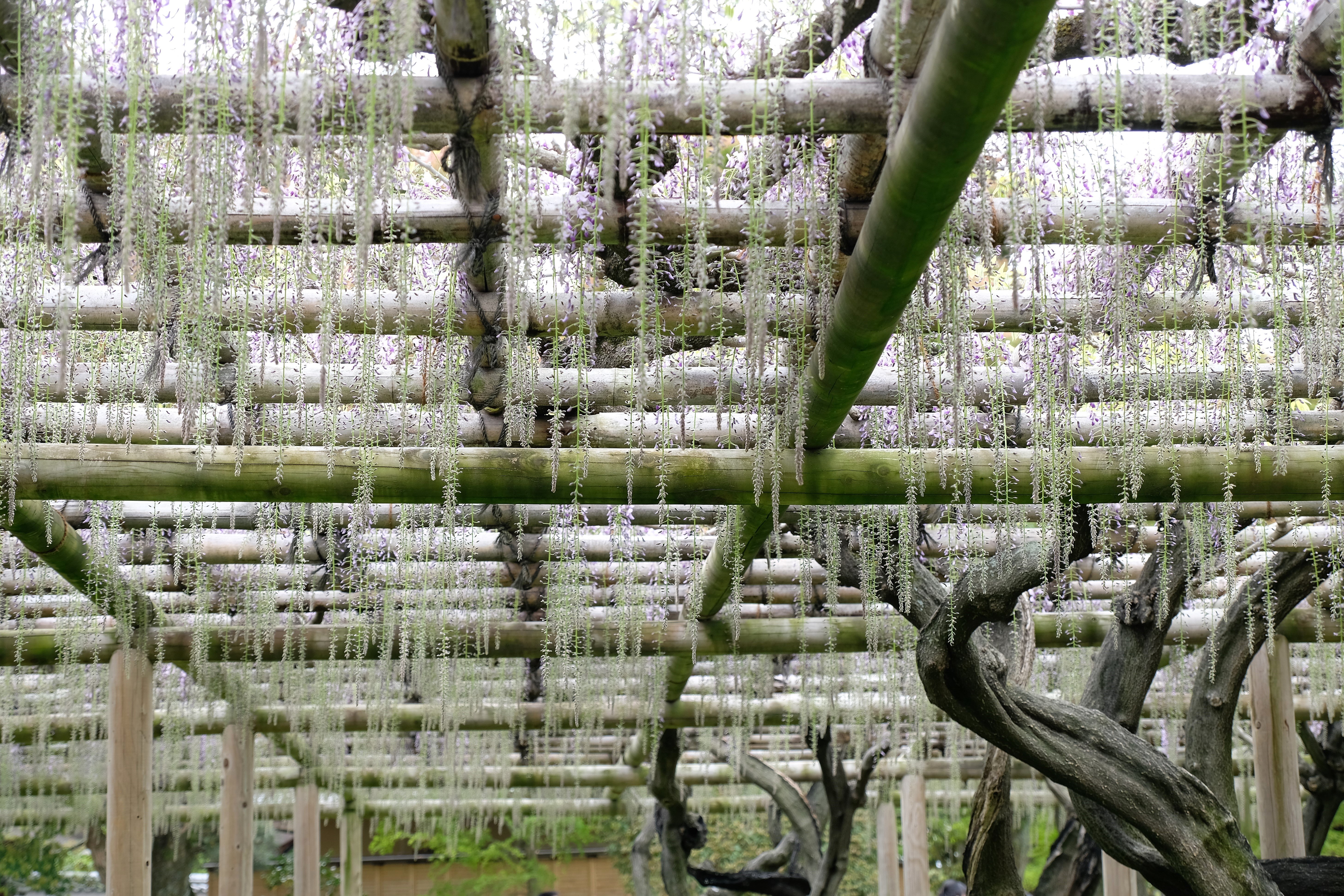

Back to Kyoto
Next, I had to go back to Kyoto to get to Kiyomizu-dera. I could have caught a bus from Kyoto Station to Kiyomizu-dera or nearby, instead deciding to walk. Glad I did. Taking the route less travelled is my moto (most times). When possible I try take routes used by locals, or even detours to see where people live. Any opportunity I get to get away from “touristy” norns I try to take. It normally gives me the chance to see normal living of local residences. Most tourist sites throughout the world are to some extent tainted. The lesser visited/seen areas are more authentic…unfortunately these seem to be becoming fewer and fewer.
Otani Hombyo Tomb and Otani Cemetery
Accidentally I took a detour heading to Kiyomizu-dera. I thought I must have taken a wrong turn because I found myself heading up a long stairwell through a large cemetery. Much later to find out it was Otani Cemetery. Going arse about face, I walked through the cemetery before arriving at Otani Hombyo Tomb. In fact, the only reason I found the entrance of the tomb, was because I was trying to get out of the cemetery! Ending up at the entrance by chance!
Anway, Otani Hombyo (also known as Nishi Otanji) is the tomb of Shinran Shonin, ultimately the founder of Pure Land Buddhism (Jodo Shinshu). I had no idea what I had stumbled upon because I was a tad lost! Had I known I would have spent more time there instead of just pocking my head in to nose about. Adjacent to Otani Cemetery is the biggest in Kyoto. Surrounded by the forest on Mt Otowa, with thousands of mini obelisks following the lay of the land like undulating waves of granite.



Kiyomizu-dera
Kiyomizu-dera is perched on the side of Mt Otowa, and renowned for many reasons. One being its spectacular views! Its famous massive veranda offering panoramic views over lush forest and the city beyond. Not during my visit though! What a pity, I arrived towards the back-end of the afternoon, hoping to see the sun set. Unfortunately, this was not possible…I say that very selfishly! Kiyomizu-dera was under restoration when I visited. The entire building, from top to bottom was cocooned in scaffolding and protective plastic, only the tiniest sliver of veranda was open.

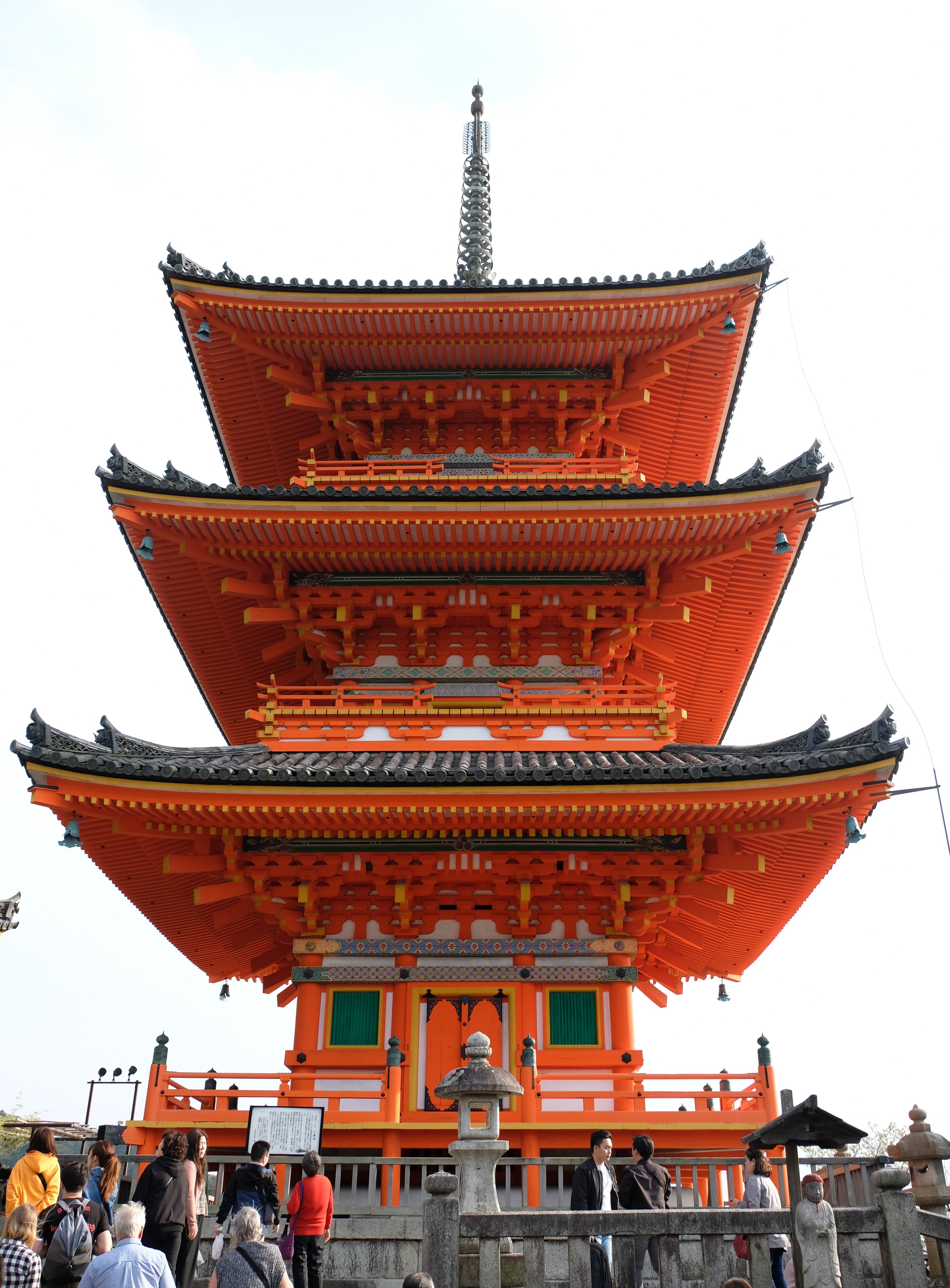
Background and Interesting Facts:
- Kiyomizu means “clear or pure water”, in reference to the waterfall and stream that runs behind and under the temple
- It’s a UNESCO World Heritage site
- Not a single nail was used in its construction
- The original temple dates back to 778, with the current temple dating to 1633 at the order of Tokugawa Iemitsu (same person who finished Edo Castle
- It used to be associated to the Hossō Buddhism sect, but severed its affiliation in 1965 to now be part of the Kitahossō sect.
- If you jumped off its veranda (13m high) and survived, your wish would come true. 234 recorded people had jumped during the Edo period, around 35 died! Now it is forbidden to jump off…health and safety gone mad! ?
- Jumping off the veranda coined the phrase “to jump off the stage at Kiyomizu”, similar to the English expression “to take the plunge”
Neon bright vermilion structures bring the mountain to light since Kiyomizu-dera is under a blanked of grey. Unlike most other temples I’d seen, here the terrain of Mt Otowa scatters the structures on different levels. Each one on a pedestal terrace cut into the mountain, as if on display in a gallery. The stark contrast of vermilion against a backdrop of green forest accentuates the colours like a flower in the desert. Somehow the concrete steps feel at home as they blend into the stone retainer walls and foundations.
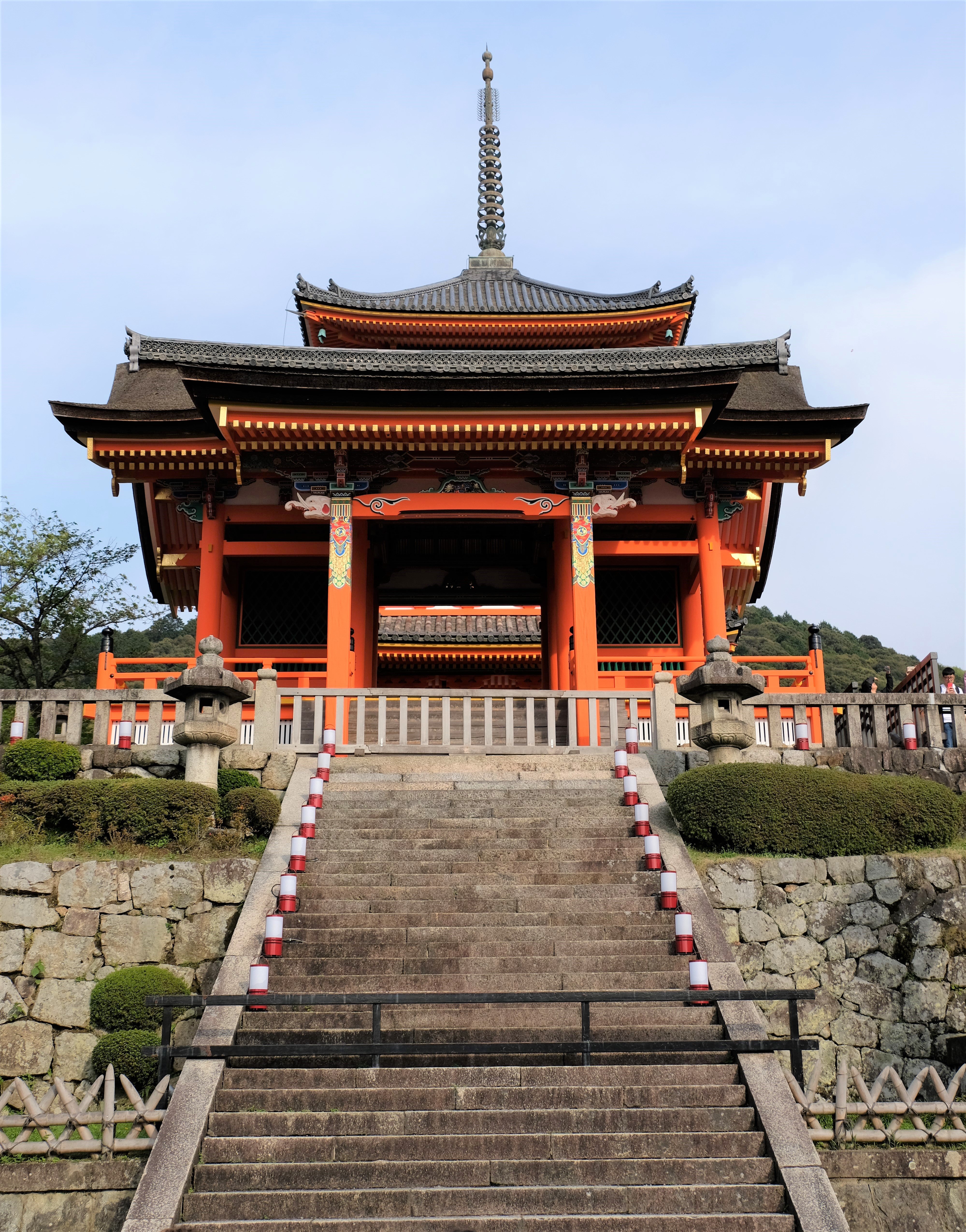
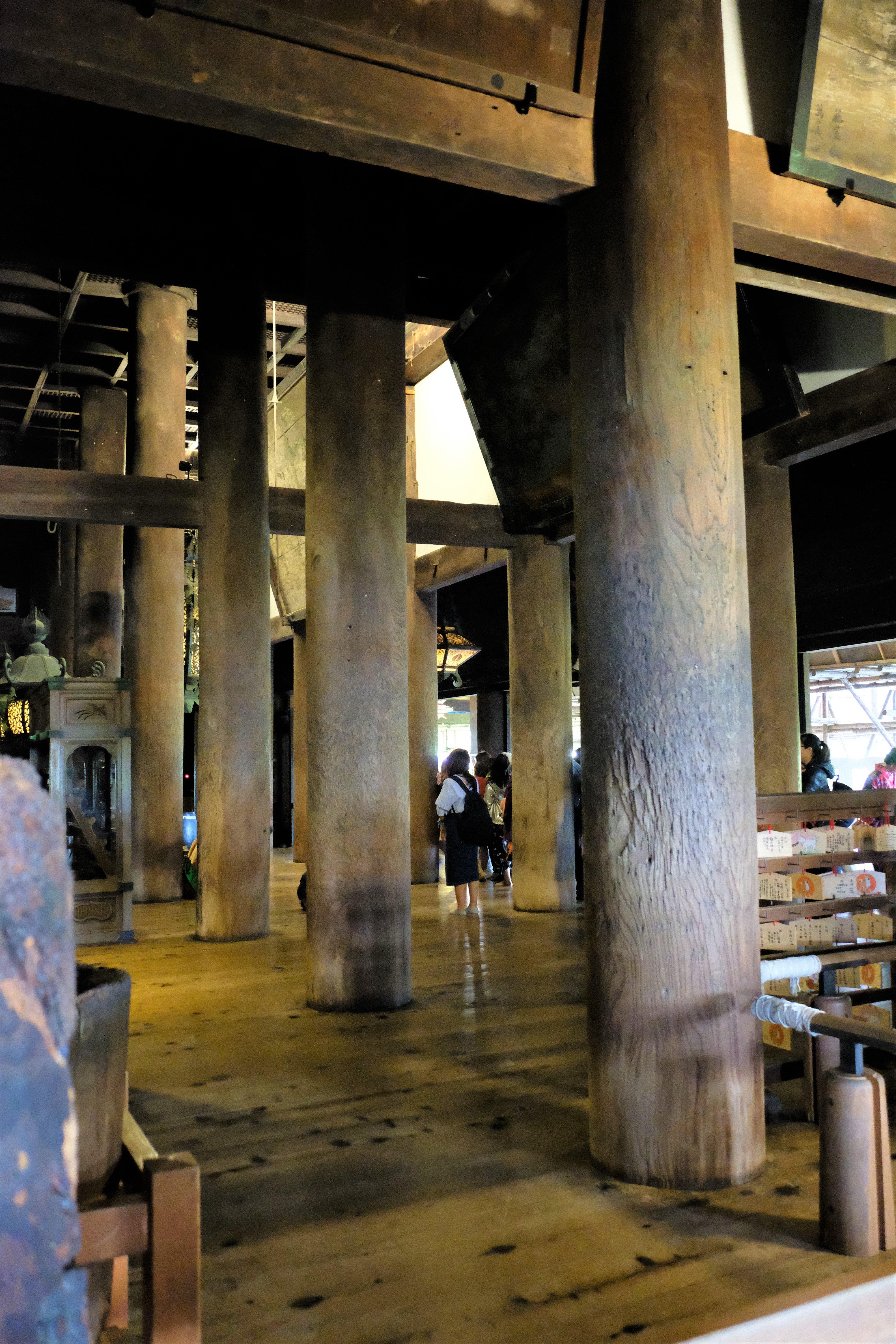
I have two disappointments about my visit to Kiyomizu-dera, the first I have already mentioned. The second, I must have messed around with my camera settings by accident, because many of my photo’s came out terribly. There were so many pictures that were out of focus, how I just don’t know! Weeks later I went through them, I was so disappointed. Oh well, photos aren’t the be all an end all. My travelling is about learning and experiencing, though having nice pics as memories is also a nice thing to have ☹.
Compared to other temples and shrines, Kiyomizu-dera has by far the most colour, hmmm, maybe with the exception of Heian Shrine. I’m beginning to sound like a stuck record, but the surroundings make the difference. Getting to Kiyomizu-dera, you are surrounded by forest, houses, even if you take my route via Otani Cemetery, the scenery monotone most of the time. Then, before you know it, you look up, your eyes are dazed with garish colour! I don’t mean that in a derogatory way.
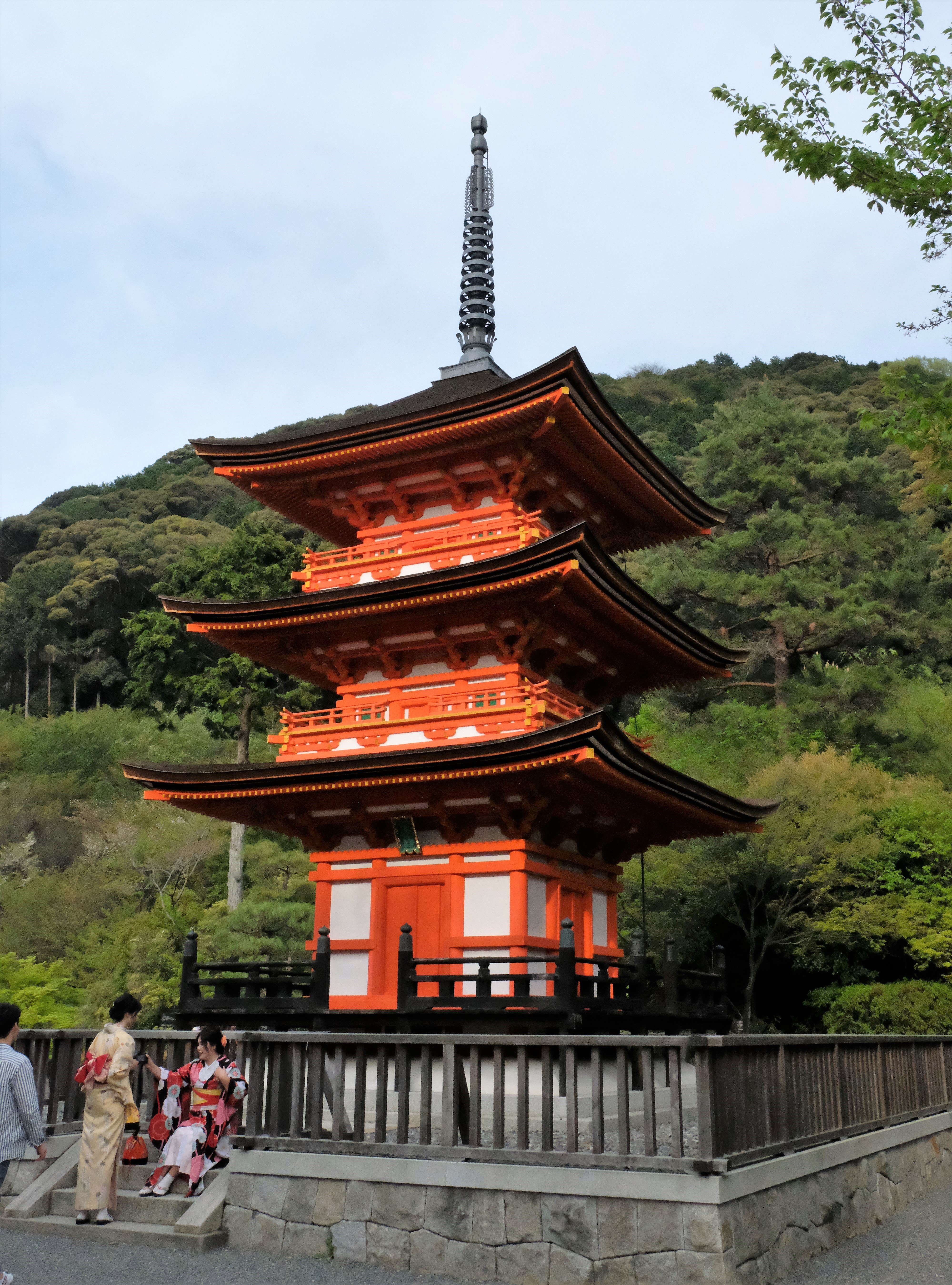
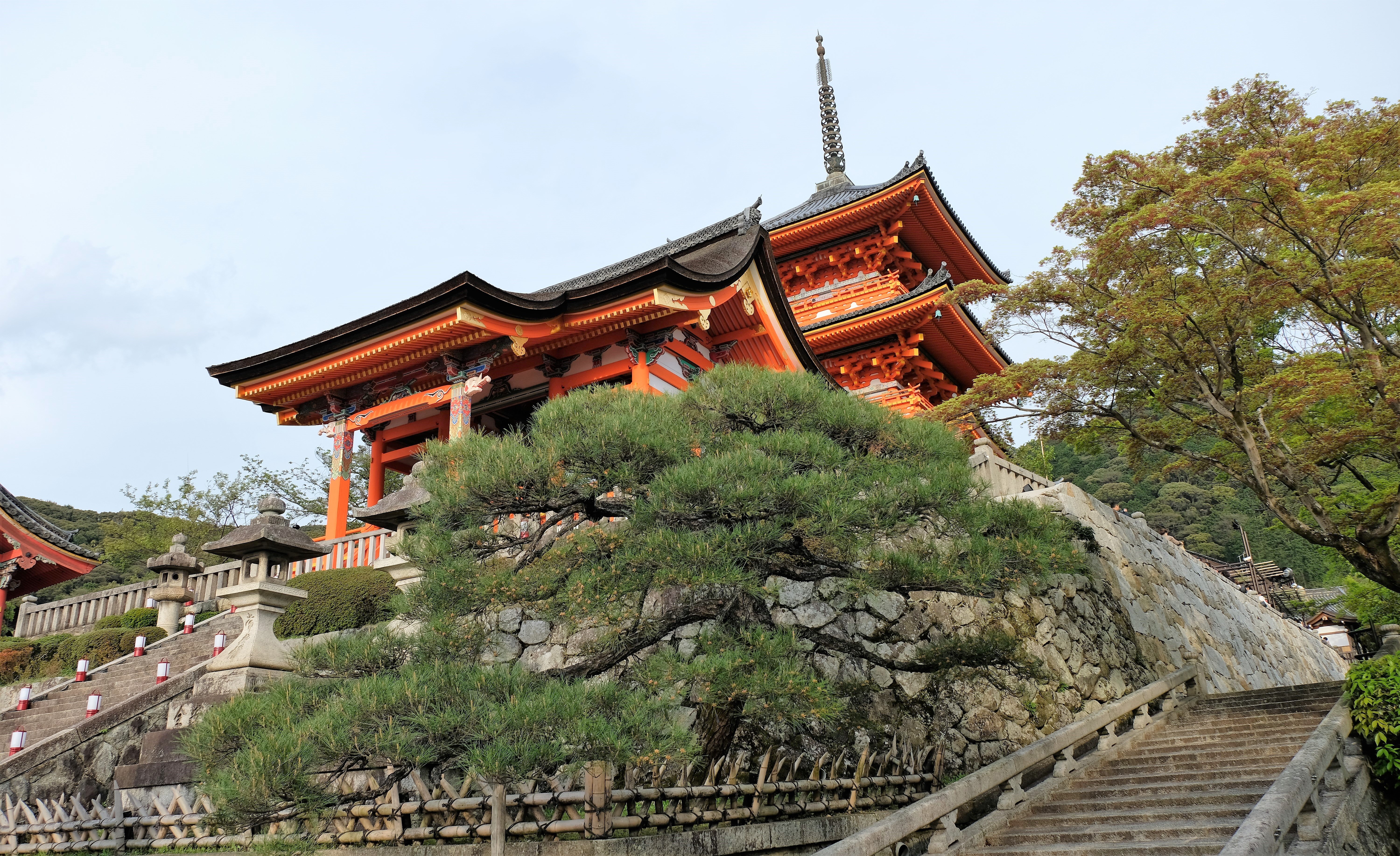
Because of the restoration work being conducted some of the temple complex was closed, not just the main building. Even so, there was enough there to keep me interested and perplexed. Writing about all these Buddhist Shrines and temples has been a bit of a challenge. Firstly, I know very little to nothing about Buddhism. Secondly, I have almost no tangible knowledge of Japanese history prior to the 19th century. This lack of knowledge both culturally and religiously has meant I’ve had to do so much research to for me just to understand the basics. So, if anything is incorrect please let me, and if what I write seems to be all over the place please forgive me!
Kiyomizu-dera was my last visit of the day, so I’ll leave things there and include most of the photos afterwards. One of the most challenging things I find it to whittle down my photos. From the onset I’ve never wanted batnomad to be a picture gallery, but sometimes I find it very difficult not to include lots of photos. It’s so easy to take 40+ pictures per site, then trying to limit it to 20-30 pictures per post if bloody difficult! Considering I can go to multiple places on one day that could be 100+ pictures to choose from. Of course, many pictures are not worth using, there are also many pictures I don’t include which only have meaning or relevance to me.
Anyway, I hope you liked the read, or at least the pictures ?
Pps. On my way back to my hotel for dinner (I’ll write separately about some of the food etc.), I passed the Yasaka Pagoda and Shrine. An imposing elaborate pagoda nuzzled between the houses in a maze of narrow streets. Officially called Hokan-ji Temple, but locally called Yasaka-no-to/Yasaka Pagoda. Dating from 592, as with so many buildings in Kyoto it has been destroyed by fire many times – the current building dates to 1440.

